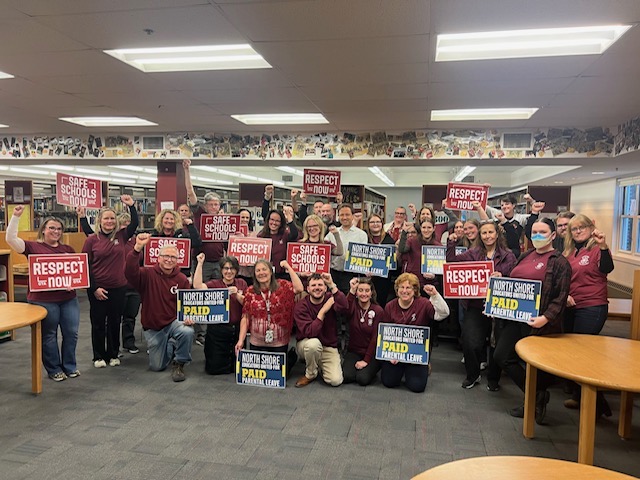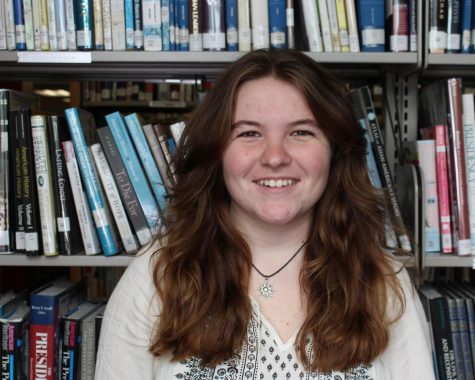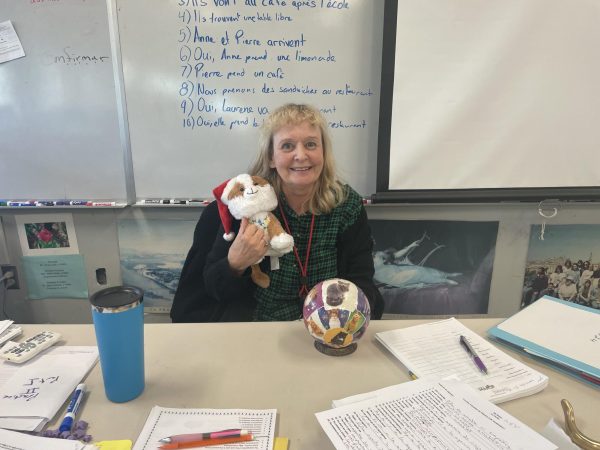Scheduling woes reach their peak
February 13, 2017
For many GHS students, scheduling issues have caused temporary headaches throughout their high school careers. But as the fourth week of the new semester begins, a handful of students are still without a D-block class and are frustrated to see no end in sight.
“I have spent every D-block in the guidance office since second semester started,” said junior Rosie Favazza, who is still without a D-block class. “I did know about the problem in the summer, but I wasn’t worried about confronting it until second semester started because I figured they would have fixed it by then.”
About a dozen other students have faced the same issue. When asked if there were students who are still not placed in a D-Block class, guidance counselor and Guidance Department Leader Laura Carlson stated that “there should not be any students left with this issue.”
However, guidance councilor Carl Sacco said earlier in the same morning that “there are a few students who are still unresolved.”
“If there are 850 kids in school, you have to make sure you have 850 seats during the blocks,” said Sacco. “But the issues with the D-block schedule has never happened before.”
The second semester scheduling problems were initially addressed in the fall by guidance and administration.
“The first thing we did to solve the problem creatively was talk to elective teachers to see if they could host students in their elective classes even if they were full year, and students would still get a half year credit,” said Principal James Cook.
A higher level culinary class that ran D-block was modified to include first year culinary students during the same block to help absorb some of the students still in need of a class. This class, along with the two other elective classes offered during this block, was not enough to fix the problem entirely. Placing students into independent studies was determined as an alternative option in some cases.
Independent studies as a potential solution
According to Favazza and her friend Gianna Cabral, who are both still without a D-block, guidance pushed independent studies as the only option.
“They told us that we have to find a teacher that will take on the independent study, and that we had to make our own syllabus and our own course,” said Favazza. “It’s unfair for them to give us extra responsibilities when it should be their responsibility to find us a class in the end.”
Other students were also instructed to find teachers who could oversee independent studies. Foreign Language Department Leader Celestino Basile, along with Science Department Leader Rachel Rex and English Department Leader Michael Telles, said they did not know independent studies were options until students with the D-block problem approached them, or a teacher in their department, and asked them to take on the independent study.
A handful of other teachers, including Italian teacher Teresa Gallo, Engineering teacher Kurt Lichtenwald, and Photography teacher Emily Harney also said they were unaware of this option, or that there was a scheduling problem at all, until they were informed by the students or asked to oversee an independent study by a student.
“For students it’s very frustrating,” said Harney. “As a teacher I want to be able to provide learning time as much as I can because I love to teach, but unfortunately I have a prep block.”
According to Basile, he did not approve a student’s request for an independent study within the language department for several reasons.
“[Independent studies] do not work from past experiences because students aren’t serious enough even if a teacher is willing to take it on,” said Basile. “It is extra work for the teacher, and also the worst part is the student stops caring after a while and the student misses the whole back and forth of the classroom environment.”
He also suggested that students who were seeking to start an independent study take part in a first year language class.
“The students need to participate and they need to be students,” continued Basilie.
However, Principal Cook stated that independent studies should not have been the first option to remedy the D-block problem for students.
“When the student wants to do an independent study, they have to go through the form and talk to teachers, parents, and guidance counselors,” said Cook. “Creating independent studies was never intended to be the first option. It was intended for students who already had strong relationships with teachers or special interests.”
He also agreed with Basile in that not every student is cut out to take an independent study, as “It takes a special kind of student who has willingness and eagerness to learn.”
“As a teacher, I remember being asked by students to advise their independent study and saying no because they were not serious enough to see it through,” said Cook. “I also remember very great student projects that have come out of independent studies.”
“Teachers are not required to take on independent studies,” stressed Cook.
For Favazza and Cabral, taking an independent study eventually became the best option, even though they were initially skeptical. Both girls have an in interest in writing and illustration, and decided that they wanted to use the independent study opportunity to create and illustrate novels throughout the second semester.
“When they go to college, to show that they did work in high school but also produced a product is good,” said Sacco.
They were told by guidance to create their own syllabus, final, and grading weights for each aspect of the course. However, after spending about a week and a half in the library during D-block and working on their independent study without any teacher in charge of their course, the girls hit yet another roadblock.
“We were told by guidance that the syllabus we made did not meet the requirements, even though we were never given any requirements or help in making the syllabus,” said Favazza.
Overcrowded class sizes
Now, the girls are being pushed to instead take the drawing one class offered during D-block, which already has more than 30 students in it.
“I don’t know who came up with putting us in this class, but this will be my third time taking a drawing one. I just took it last term, so why am I taking it two times in one year? Why am I taking it three times in high school anyway?” said Cabral, who passed the class both times already.
Art teacher Lorrinda Cerrutti, who teaches drawing one, has had to bring more tables and chairs into an already cramped D-block class to compensate for the number of students she has.
“If you’re letting kids create an independent study, why wouldn’t you also create a directed study class as well?” said Cerrutti.
While other teachers, including Basile, suggested the return of directed studies, which are teacher supervised study halls, they are no longer scheduling options as they were reportedly being misused and not taken seriously by students in past years.
“The decision to eliminate directed studies was between the superintendent and the principal,” said Vice Principal Maria Lysen.
Along with the issues surrounding independent studies, class sizes have been a major issue for the elective teachers who have a class during D-block, and in other blocks.
For gym teacher John Sperry, enrollment for his D-block yoga class is already too swollen to make the class as relaxing and effective as possible. Both of his yoga blocks have more than 35 or 40 students in them, and he must hold the class in the weight room for a lack of a better space.
“It’s tough because the weight room is packed like sardines during yoga,” said Sperry. “I’m here for the kids, and if a kid wants to be in my class I let them in because they want to be here. It’s harder when kids get shoved in the class and they don’t want to be here.”
How the 2016-2017 scheduling process factors in
Creating the schedule each year is a collective effort made by the principal, department leaders, and the Student Information Coordinator.
However, Principal Cook was not involved in the scheduling process at the end of last year as a result of the transition of leadership from Erik Anderson to him, as well as an array of scheduling problems in the English department.
Cook, who was the English department program leader, had to adjust the English schedule to accommodate a new teacher who would fill his former teaching position, as well as the temporary loss of an English teacher whose sections would not be run while she is on a year long sabbatical. He also helped the new English department leader adjust to the position while doing the same himself.
Guidance counselors also do not create the schedule, as it is their job to place students into the courses being offered for the year.
“A general philosophy at GHS is when a problem arises like students who are without a second semester course and other courses are filled, we need to solve the problem,” said Cook.
Cook also cited smaller, specialized classes, such as AP classes or higher level electives, as one of the factors that puts pressure on the schedule.
“We want to and will continue to offer specialized courses with prerequisites and special interests from students while still offering beginner level classes,” said Cook. “We need to be thoughtful and respectful in how to respond to these pressures.”
In response to the number of teachers that have left or have been laid off over the past several years, and the loss of the sections they taught as a result, Sacco stated that student population has also gone down and will continue to be low until the second graders come up to high school.
Professional Learning Communities also limit the ability to schedule students around certain blocks, as they allow every teacher to have one block a day off so they can meet with their department. According to Sacco, “they are very important to make learning as effective as possible.”
But it is clear that there are larger issues than class sizes, independent studies, or even scheduling.
“We all need to be on the same page,” said Lyson.
To read Gianna Cabral’s first hand account of the scheduling issues this semester, go to https://thegillnetter.com/4440/opinion/tell-my-why-i-still-dont-have-a-d-block-four-weeks-later/










































